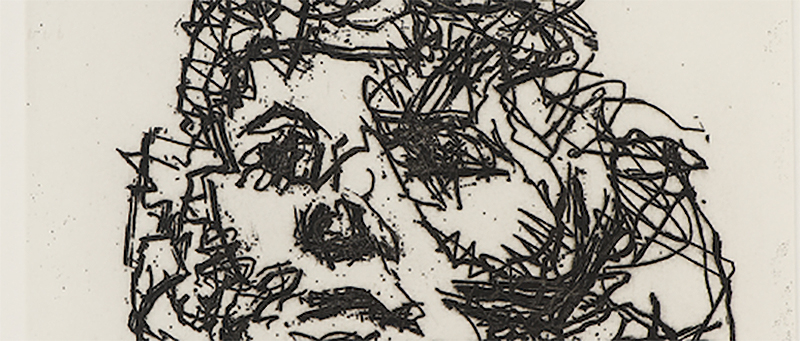
The Ben Uri Gallery, located at 108A Boundary Road, NW8, has a collection of 900 artworks by Jewish, refugee and immigrant artists, including works by big names like, Auerbach, Bomberg, Chagall and Grosz. You can browse through the whole collection online, focus on a medium or technique or a type of art.
Teachers and students can also explore educational resources based around the collection.
One of the best known artists with work in the Ben Uri collection is ninety year old Camden artist, Frank Auerbach, the subject for this week’s theme of the week. You can see a series of seven portrait etchings from the collection below.
The Ben Uri collection website gives us some background to Auerbach:
‘Auerbach was born in 1931 in Berlin to Jewish parents; his father was a lawyer and his mother a former art student. In 1939 he was sent to England to escape Nazism. His parents, who remained behind, died in concentration camps. He spent his childhood at a progressive boarding school, Bunce Court, at Lenham near Faversham, Kent, a school for Jewish refugee children. During the war years, the school was evacuated to Shropshire. He attended St Martin’s School of Art, London, from 1948 to 1952, and studied with David Bomberg in night classes at Borough Polytechnic. It was during this period that he developed a friendship with fellow student Leon Kossoff. Auerbach studied at the Royal College of Art from 1952 to 1955. He has used three principal models throughout his career: his wife Julia, who first posed for him in 1959; Juliet Yardley Mills (‘J.Y.M.’), a professional model whom he met in 1957; and his close friend Estella (Stella) West (‘E.O.W.’), the model for most of his nudes and female heads prior to 1973. Rarely leaving Britain, he lives and works in London and has had the same studio since the 1950s. Auerbach exhibited regularly at the Beaux-Arts Gallery until 1963. From 1965 he exhibited at the Marlborough Gallery. He was given an Arts Council retrospective at the Hayward Gallery, London in 1978, and had solo exhibitions at the British Pavilion in the 1986 Venice Biennale, and at the Rijksmuseum Vincent Van Gogh, Amsterdam, 1989.’
The website states that ‘Auerbach’s work is predominantly non visual… his lines are not used to describe features or light and dark for example. He seems to be aiming at a more emotional and physical use of line. He tries to capture a sense, an atmosphere, a state of mind perhaps or a physical essence.’
Jake Auerbach made a film about Frank Auerbach. There’s an introduction here, with a link to buy the full length film, but I can’t find out how long the full length film is.
There is also this excellent twenty minute illustrated conversation between Auerbach, Mark Hallett and Catherine Lampert, the editors of a book he had written. The conversation is full of wonderful nuggets about drawing. Auerbach talks about his process of drawing and erasing, as if in a trance, with little awareness of what is being made, ‘rehearsing and improvising’, working in and out of the drawing. His drawings take a long time and the ‘ghosts’ of his exploration remain at the end. He gives a few thoughts as to when a drawing might be finished; when he ‘finds inspiration’, when his model ‘visits’ him through his drawing, when changing any mark would make the drawing less specific, or when he feels that he finally understands his subject.
In 2024, the Courtauld Gallery recently showed charcoal head drawings by Auerbach and there was a brilliant interview will him on This Cultral Life too. And finally, Auerbach isn’t just a portrait artist. Have a look at this film, where Dr Barnaby Wright talks through an exhibition of his Building Site works, held at the Courtauld Gallery in 2010.
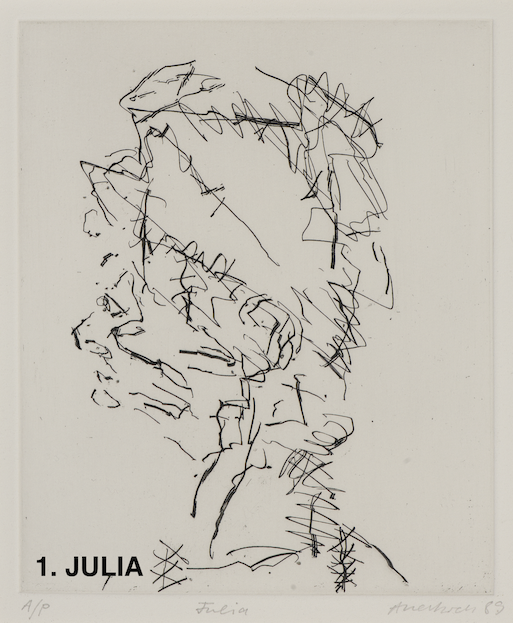
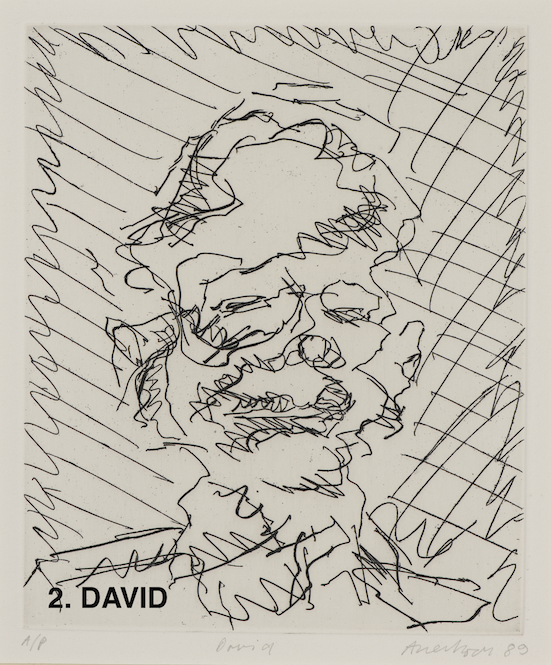

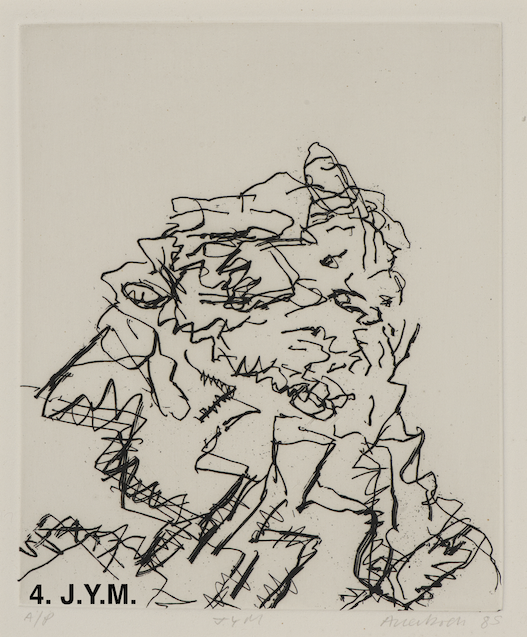
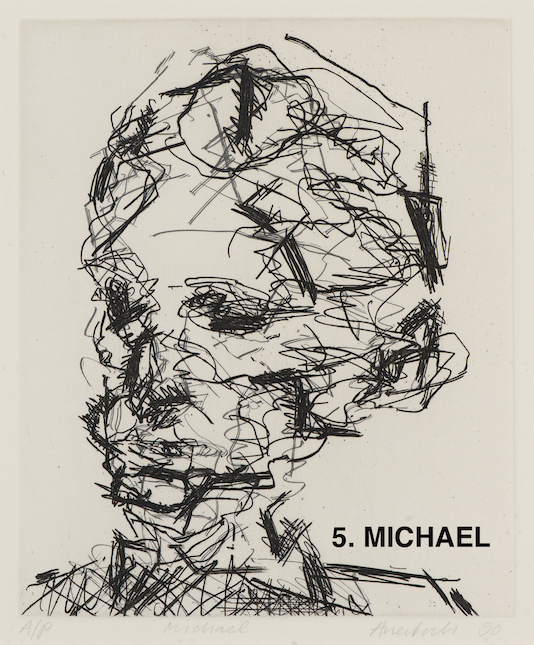
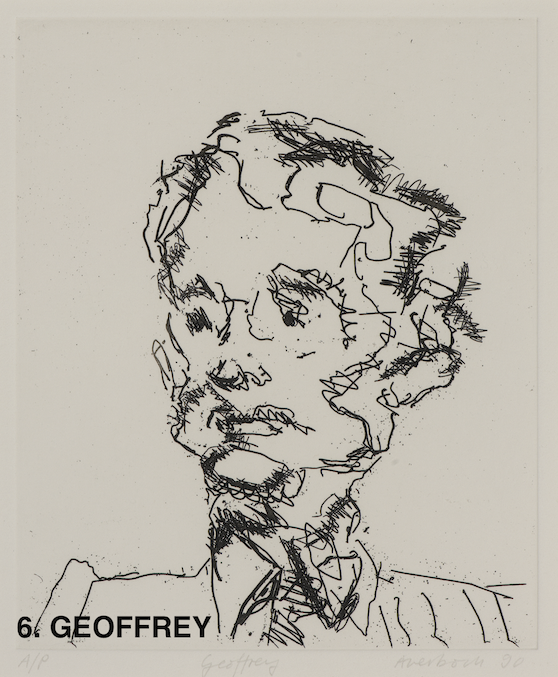
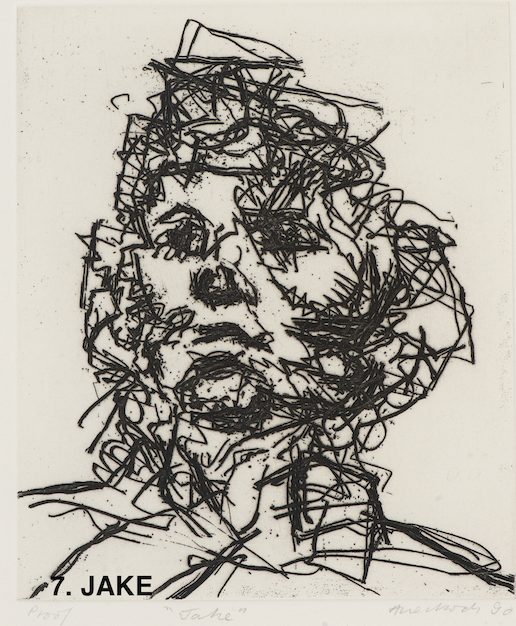
Seven etching portraits (1989-90) from the Ben Uri collection.
- Julia (19.5 x 16.5 cm) 1989 Etching, printed on Somerset white paper, artist’s proof outside the published edition of 50. The subject is Auerbach’s wife, who was established as a regular weekly sitter for the artist.
- David (19.3 x 16.3 cm) 1989 Etching, printed on Somerset white paper, trial proof outside the published edition of. The subject is David Landau, editor of Print Quarterly, and a regular weekly sitter for Auerbach.
- Catherine (20 x 16.5 cm) 1989 Etching, printed on Somerset white paper, artist’s proof outside the published edition of 50. The subject is Catherine Lampert, then Director of the Whitechapel Art Gallery and established as a regular weekly sitter for Auerbach.
- J.Y.M. (20 x 16.5 cm) 1989 Etching, printed on Somerset white paper, artist’s proof outside the published edition of 50. The subject is Juliet Yardley Mills, a professional model who had posed for Auerbach since 1956.
- Michael (20 x 16.5 cm) 1990 Etching printed from 2 plates in grey and black on Somerset white paper, artist’s proof outside the published edition of 50. The subject is Michael Podro, an art historian who had written about Auerbach.
- Geoffrey (19.5 x 16.5 cm) 1990 Etching, printed on Somerset white paper, artist’s proof outside the published edition of 50. The subject is Geoffrey Parton, a Director of Marlborough Fine Art.
- Jake (20 x 16.5 cm) 1990 Etching, printed on Somerset white paper, artist’s proof of second state outside the published edition of 50.